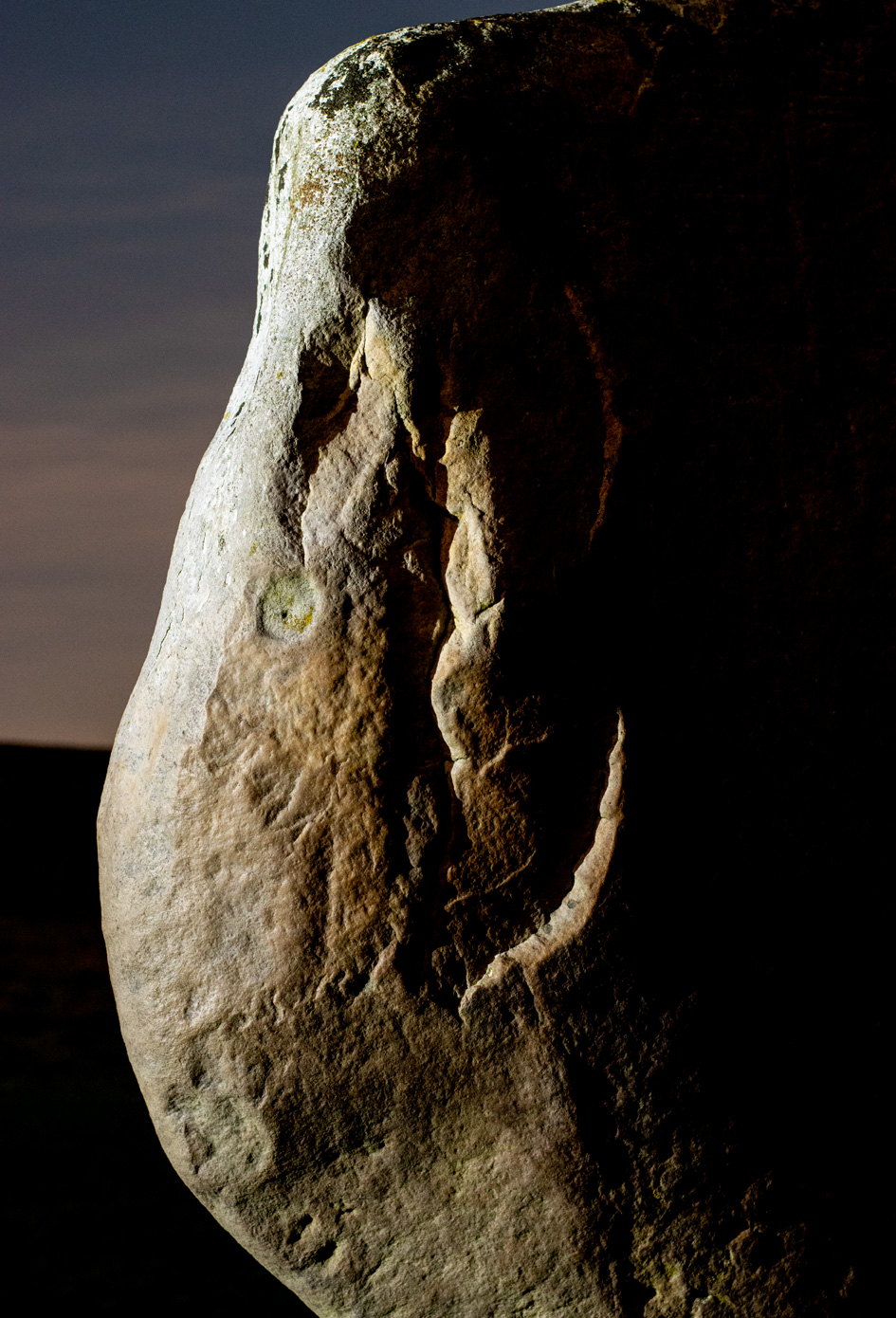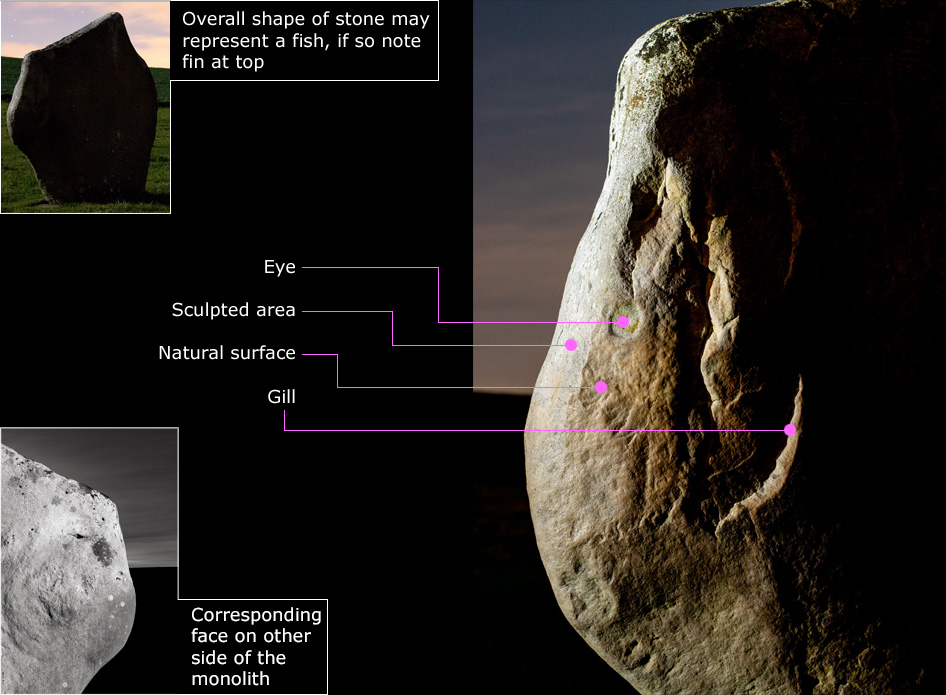Explanatory Materials Appear Below This Image - Please Scroll Down To View


Click here to read a note examining the possible celestial influences behind the creation of this monument
| This Stone Demonstrates How Avebury's Monolith's Were Selected And Used | ||
|
Stone 29a teaches us a great deal about how the Avebury monoliths were selected and used. The key to this understanding is to appreciate how this particular stone originally lay on the ground when discovered by Avebury's creators. Amazingly, we can easily work this out because it is the (now) east facing side of the stone which is marked by clear linear drag marks (see image right). These marks are profoundly significant because you don't flip a heavy stone before you drag it so that it is the marked side that must have been down/hidden! Having ascertained that it is the (now) western face of the stone (click here to view) that was up and exposed to neolithic gaze, we can easily work out why it was selected - it was the naturally ocurring "eye" on it proving the simulacra hypothesis. After being selected the stone was dragged to the Avenue site, erected and crucially, a matching face was carved onto the (now) east facing side, combining east and west faces into a 3D statue of an animal. It is the carved part which is shown at the top of this page. The workflow which created 29a proves how Avebury was built - observers selected simulacra among the natural stones and then perfected these with carvings to further the animistic themes of the tribe. We are incredibly lucky this uniquely informative monolith has survived! It should be widely studied. |
|
|
![]()
Image copyright David Baldwin Night Photography